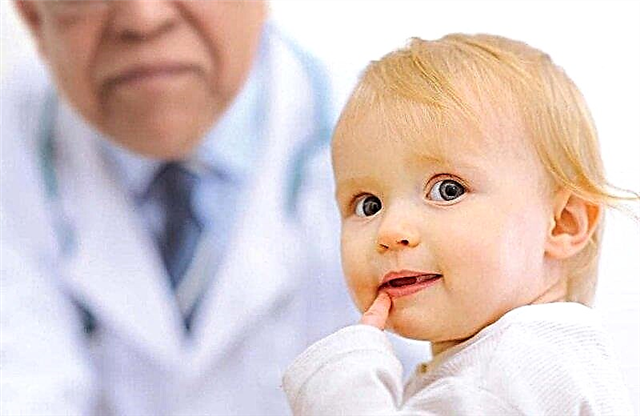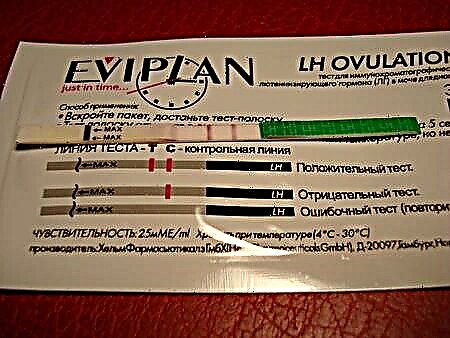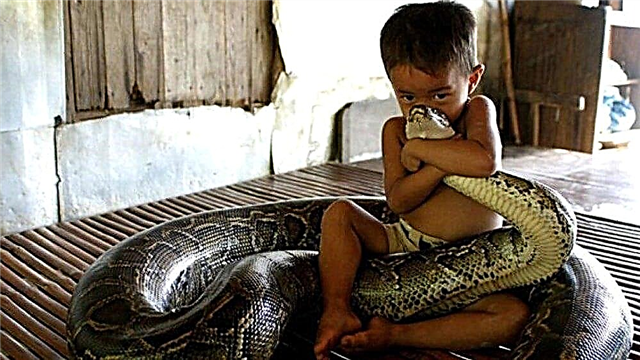It happens that a baby is born with a very unusual appearance. His blond hair, skin and eyes grab the attention of others and raise many questions. Although in the modern world, almost everyone has heard of such a phenomenon as albinism, there are many myths and unfounded prejudices around the disease. Parents of "special" babies need to know what manifestations, in addition to external, this disease leads to, and how to prevent the development of dangerous complications of the disease.
About the disease
The concept of albinism combines a group of hereditary pathologies in which there is a lack or absence of melanin pigment in the skin, hair, and the iris of the eye.
According to statistics, among Europeans, the disease is in one baby out of 37,000 newborns; among representatives of the Negroid race, this figure reaches 1: 3000. In general, the world data on the incidence of the disease varies from 1: 10,000 to 1: 200,000. But the highest incidence of albinism is found among the American Indians.
The Kuna Indians are indigenous to the coast of Panama, their number does not exceed 50,000. The tribe has still preserved old traditions and culture, and lives practically in isolation from the whole world. Every 150th representative of the nationality has albinism, which confirms the hereditary mechanism of transmission of the disease.
A bit of history
The concept "albino" comes from the Latin word albus, which means "white". The term was first introduced by the Filipino poet Francisco Baltasar, thus calling the "white" Africans. The writer mistakenly believed that the unusual skin color of these people was due to marriage with Europeans.
Mentions of mysterious people can be found in the history of almost every country, but the attitude towards them was very different. Misunderstanding of the problem led to different reactions of the population to albinos, ranging from worship and attribution of magical properties to complete rejection, demonstrating pathology in traveling circuses.

In African countries, life for people with hereditary syndrome remains difficult to this day. Some tribes consider the birth of an albino a curse, others attribute magical, healing properties of his flesh, therefore they often kill innocent people.
In the modern world, there is more loyalty to albinos. With the development of television, the problems of people with unusual features have become common knowledge. There are many famous and talented people among albinos: actors, singers, models (Dennis Hurley, Sean Ross, Connie Chiu, Diandra Forrest).
Why does the disease occur?
The disease is hereditary with an autosomal recessive transmission mechanism. Although the disease is rare, the albinism gene is found in every 70th inhabitant of the planet, but it does not cause any external manifestations. In situations where both parents have this trait, the combination of their genetic information can lead to the birth of a baby with albinism. The development of the disease is not related to the sex of the child; the disease is equally common in boys and girls.
The very name "melanin" comes from the Greek word melanos, which means black. This substance is capable of imparting a dark color to the tissues of a living organism, but its properties do not end there. Due to the presence of the pigment, a protective function is carried out, melanin is a kind of protector, protects tissues from the harmful effects of ultraviolet rays, carcinogenic and mutagenic factors.
A hereditary defect leads to a disruption in the metabolism of the amino acid tyrosine, which is involved in the formation and deposition of the pigment melanin. Pathological changes can be located in different chromosomes and be of different severity, therefore, the manifestations of albinism are somewhat different. This feature is the basis for the classification of the disease.
Classification and features of manifestations of albinism
Oculocutaneous albinism (OCA) type 1
This disorder is associated with a mutation of the tyrosinase gene on chromosome 11 and leads either to a decrease in education or to a complete absence of tyrosine (an amino acid necessary for the synthesis of the pigment melanin). Depending on the severity of the GCA defect divided into:
Oculocutaneous albinism 1A
This is the most severe form of HCA, which is due to the absolute inactivity of the tyrosinase enzyme, which leads to the complete absence of the melanin pigment. Signs of this form can be found immediately after the birth of the baby, the crumbs are born with white hair and skin, a light blue iris. The characteristic appearance makes it possible to immediately suspect a hereditary ailment in an infant.

As the baby grows up, the characteristic signs of the disease do not change. The child is not able to sunbathe, delicate skin is very susceptible to burns due to the complete absence of melanin. The risks of developing skin cancer are very high, so children should avoid exposure to the sun and use special protective products.
On the skin of people with this form of the disease, there are no moles, areas of pigmentation, but the appearance of pigmented nevi, which looks like an asymmetric light spot with clear edges, is possible.
The iris of an infant is usually very light, blue in color, but can appear red in bright light. This is due to the translucence of the blood vessels of the fundus through the transparent media of the eye.
Often, a baby has such vision problems, astigmatism, strabismus, nystagmus, which appear immediately after birth or during life. And the phenomena of photophobia are very characteristic for this particular form of the disease.
Lack of melanin is manifested by impaired visual function, and there is a dependence of the concentration of pigment and visual acuity. With the complete absence of melanin, the severity of visual pathologies is maximum.
Oculocutaneous albinism 1B
The enzyme tyrosinase functions in the body of a sick child, but its activity is reduced, so a small amount of melanin is formed in the baby. Depending on the severity of the gene defect, the concentration of the pigment produced also changes. The manifestations of the disease vary, and the skin can have a different color, ranging from almost normal skin color, ending with imperceptible pigmentation.
Babies are born without signs of melanin in the tissues, but over time there is some darkening of the skin, the appearance of pigmented and non-pigmented nevi. Changes in the skin are often caused by exposure to sunlight, there are signs of sunburn, but the risk of developing skin cancer remains high.
The hair of babies over time becomes yellowish, and areas of brown pigmentation appear on the iris. Damage to the organs of vision is also present in children with this form of the disease.
Temperature sensitive type
This form of the disease belongs to type 1B type, in which the tyrosinase activity is altered. The enzyme acquires temperature sensitivity and begins to actively work in areas of the body with a lower temperature. Patients with this form of the disease are born with white skin, lack of pigmentation in the iris and hair.
Over time, there are signs of darkening of the hairs on the arms and legs, but in the armpits and on the head, they remain light. Due to the higher temperature of the eyeballs, compared to the skin, in children with this type of disease, pathologies of the organs of vision are significantly pronounced.
Oculocutaneous albinism type 2
This type of disease is the most common in the world. Unlike type 1 HCA, the mutation is located on chromosome 15, and the induced defect does not disrupt tyrosinase activity. The development of albinism in type 2 HCA is due to the pathology of the β-protein, impaired tyrosine transport.

In the case of the development of HCA type 2, babies of the European race are born with external signs typical of albinos - white skin, hair, light blue iris. Therefore, it is sometimes difficult to distinguish to which type of disease the pathology in a child belongs to. With age, some darkening of the hair occurs, the color of the eyes changes. The skin, as a rule, remains white, incapable of sunburn, but under the influence of sunlight, pigmentation spots and freckles appear on it.
The manifestations of HCA type 2 are different in representatives of the Negroid race. These babies are born with yellowish hair, pale skin, and a blue iris. Over time, there is an accumulation of melanin, the formation of nevi, age spots.
It happens that albinism is combined with other hereditary diseases, for example, with the Prader-Willi, Angelman, Kallman and others syndromes. In such cases, signs of diseases of various organs come to the fore, and a lack of melanin is a concomitant pathology.
Oculocutaneous albinism type 3
In this case, the mutation develops in the TRP-1 gene, which is found only in African patients. The body of a sick baby is able to produce brown, not black, melanin pigment, so the disease is also called "red" or "red" HCA. At the same time, the color of the skin and hair of the albino remains brown for life, and the damage to the visual function is moderately expressed.
Ocular albinism associated with a mutation on the X chromosome
Sometimes manifestations of a lack of pigment are found mainly in the organ of vision, as happens with ocular types of albinism. Mutation of the GPR143 gene located on the X chromosome leads to impaired visual function, refractive errors, strabismus, nystagmus, and transparency of the iris.
At the same time, the patient's skin is practically unchanged, some paleness is possible in comparison with the color of the skin of peers.
Since the mutation is associated with the X chromosome, the disease manifests itself only in boys. Girls are asymptomatic carriers of this mutation, and have only small abnormalities in the form of increased transparency of the iris and spots on the fundus.
Autosomal recessive ocular albinism (ARGA)
The manifestations of this ailment are equally common in boys and girls, and eye manifestations prevail in the clinical picture. However, at present, ARGA has not been able to associate with any particular mutation; different chromosome defects are found in different patients. There is a theory that this disease is an ocular form of HCA types 1 and 2.
Pigmentation disorders are not always distributed evenly throughout the body. Sometimes children have partial albinism ("piebaldism"). This type of pathology manifests itself already at birth, the baby has depigmented areas on the skin of the trunk and limbs, white strands of hair. The disease is inherited in an autosomal dominant manner from parents and usually does not bring health problems, lesions of internal organs.
Diagnostics
The first signs of the disease can be detected after the birth of the baby, since the appearance of such children has characteristic features. To clarify the diagnosis, the doctor interviews the parents of a small patient in order to detect hereditary risk factors for the development of albinism.

Consultations with an ophthalmologist, dermatologist and geneticist provide grounds for making a preliminary diagnosis, determining the type of albinism. It is possible to accurately establish the pathology using genetic diagnostic tests, DNA research.
Determination of tyrosine activity in tissues is an effective method for identifying the type of albinism and prognosis of the disease, but its use is limited due to the high cost of research.
Treatment and prognosis of albinism
There is no specific treatment for the disease, parents of special children should accept this feature of the child and help him prevent complications of the disease. An insufficient amount of melanin in the tissues makes the child too susceptible to sunlight, increases the risk of skin cancer and retinal detachment.
Photophobia is very common in this disease, so babies need special high quality sunglasses. Before going out on the street, the child must use sunscreen for the skin, wear hats.
The kid should be registered with an ophthalmologist, dermatologist, undergo regular examinations and follow all medical recommendations. Often, children need vision correction with special glasses and contact lenses. Subject to these rules, a patient with a hereditary disease leads a long and fulfilling life.
African countries are considered the most inappropriate place for albinos to live. The scorching sun and the lack of qualified medical care leads to loss of vision and the development of skin cancer in 70% of sick people.
Albinism myths
The unusual disease has a long history. While people's awareness of the disease is growing, misconceptions persist. stereotypes about this ailment.
1. All albinos have red eyes.
Some parents believe that for a diagnosis of albinism, a red tint of the baby's eyes must be present. But this is a misconception, the color of the iris can be different: from light blue to gray and even purple. This symptom depends on the form of the disease. The eyes acquire a red tint under certain illumination, when the vessels of the fundus become visible through transparent media.
2. Albinos do not have melanin, they cannot sunbathe.
In some cases, there is a small amount of melanin in the tissues of special children and sunburn can appear when exposed to ultraviolet rays. But such experiments are dangerous for the health of the baby, because the risk of developing skin cancer remains high in any case. A sick child has to constantly use special sunscreens.
3. White hair is a constant sign of albinism.
The hair color of children with hereditary pathology can be different: white, straw yellow, light brown. Often, with the growth of the baby, external manifestations change, moderate tissue pigmentation occurs.
Still, children with albinism differ markedly in appearance from their peers.
4. All albinos will eventually become blind.
Although the pathology of the organs of vision is very characteristic of this genetic disorder, ophthalmic problems rarely lead to blindness. Indeed, children with albinism almost always need vision correction with glasses and contact lenses, but if the necessary measures are taken, visual function will not be lost.
5. Babies with a hereditary disease lag behind in development.
The lack or absence of melanin does not in any way affect the mental development of the baby. Sometimes there is a combination of albinism with other genetic syndromes, which are accompanied by damage to internal organs, a decrease in intellectual and mental development.
But the pathology of melanin synthesis in such cases is secondary.
6. Albinos cannot see in the dark.
Due to the lack of protective pigment in the iris, albinos find it difficult to be outdoors, they develop photophobia. In darkened rooms or in cloudy weather, it is easier for children to see the world around them.But do not forget that special children almost always suffer from visual impairments, the manifestations of which do not depend on the illumination of the room.
Conclusions
Albinism is a hereditary pathology that almost everyone has heard of. But despite the high availability of information, there are many myths about this disease, and the life of "special" people cannot be called simple. Parents of unusual babies need to understand that the health and quality of life in the future depends on the correct care of the child.
You should not take the birth of a baby as a test, because these children can live a long and fulfilling life, and they especially need the help and support of their parents.



